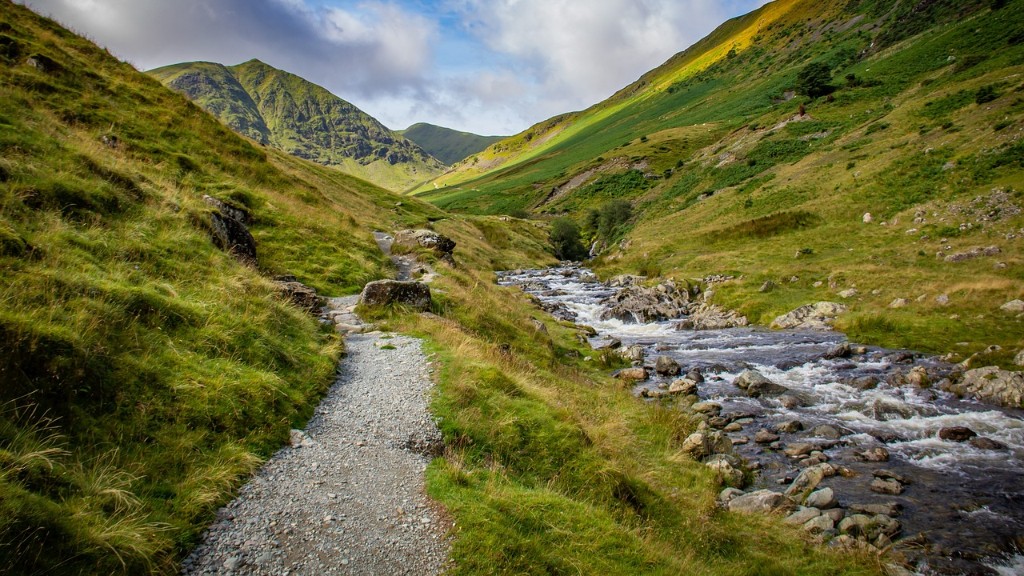How Does Pollution Enter The Mississippi River?
Pollution and contaminants can enter the Mississippi River in a variety of ways. The majority of pollutants come from point sources such as factories, wastewater treatment plants, industrial and agricultural discharge and runoff, and discharges from septic tanks. Nutrients, heavy metals, and hazardous pollutants are released into the river from these sources, which can have a devastating impact on the environment and aquatic life. The U.S. Environmental Protection Agency (EPA) reports that, “the majority of all reported violations and degradation of water quality involve human activities”.
Other non-point sources of Mississippi River pollution are cities and towns along the river, which contribute excess nutrients and bacteria to the river through runoff and storm water overflows. This runoff often contains fertilizers and pesticides from farms, contaminants from roads, and animal wastes from urban and rural areas.
The Impact of Mississippi River Pollution
In recent decades, the Mississippi River has become increasingly polluted. This has caused a decrease in native aquatic species, a decrease in oxygen levels, increased algal blooms, and other environmental factors harmful to the Mississippi River ecosystem.
The Mississippi River is home to several species of endangered fish as well as aquatic life such as shellfish, crabs, and shrimp. Pollutants such as pesticides, fertilizers, and heavy metals have caused these once thriving populations to sharply decline. Additionally, toxic substances such as mercury and lead can accumulate in fish and shellfish, making them unsafe for human consumption.
The excessive amounts of nutrients in the Mississippi River can also cause oxygen depletion. When aquatic plants and algae uptake these excess nutrients, they grow rapidly, creating mats of vegetation. As these mats decompose, they consume much of the available oxygen, reducing the amount of oxygen available to other aquatic species. Not only does this cause fish kills, but it can also lead to the release of dangerous toxins into the environment.
Who Is Responsible for Mississippi River Pollution?
The main contributors of Mississippi River pollution are considered to be the industries and agricultural activities which line the river’s banks. As it stands, much of the farming conducted along the Mississippi is unregulated and heavily reliant on chemical pesticides and fertilizers, which then run off into the river.
In addition to the farming, manufacturing, and industrial activities occurring along the Mississippi River’s banks, the EPA also cites populations growth, rapid development, and resource overexploitation as contributing factors to the pollution.
What Are The Solutions To Mississippi River Pollution?
Fortunately, there are a variety of solutions that can be used to reduce or stop pollution in the Mississippi River.
The first and perhaps most important action is for citizens to reduce or decrease their dependency on chemicals. One way to do this is through the implementation of low-impact development techniques, such as water-efficient landscaping and the use of native plants to reduce runoff.
Another step is for both small and large industries to switch to cleaner and more efficient production processes. This will not only reduce the amount of pollutants and toxins going into the river, but also help to reduce air pollution and energy consumption.
In addition, wetlands and other habitats can be restored and rehabilitated as natural barriers to reduce pollutants and sediment in the river. Wetlands are invaluable ecosystems which act as a filter and trap pollutants, aiding in the natural purification of the river.
Lastly, government policies need to be enacted that encourage industries to reduce their wastage, promote conservation, and provide incentives for businesses to use better production methods.
What Is Being Done To Restore The Mississippi River?
The EPA and other organizations have been actively working to restore the health of the Mississippi River. The EPA is focusing its efforts on reducing pollutants and improving water quality, while also increasing funding for programs that aid in river and wetlands restoration.
In addition, the EPA established the Mississippi River Basin Healthy Watersheds Initiative, a collaborative effort between federal, state, and local entities which aims to improve 6.5 million acres of wetlands, streams, and watersheds in the Mississippi River Basin. The initiative also works to prevent erosion and sedimentation, as well as reducing non-point source pollution.
The National Park Service has also been restoring and preserving rivers in the Mississippi Valley through their National Rivers and Trails Program. Programs such as the Lower Mississippi River Conservation Program, which works to restore and maintain fish and wildlife habitats and recreational areas along the Mississippi River, have been instrumental in the preservation and protection of the river.
How Can Citizens Help Restore The Mississippi River?
Even everyday citizens can help restore the health of the Mississippi River. By reducing their single-use plastic consumption, utilizing environmentally-friendly products, and converting to a chemical-free lawn, citizens can help to reduce the amount of pollutants in the river.
In addition, citizens can notify state and local officials of any illegal practices they witness taking place on the river. This can include sewage overflows, polluters discharging waste, and illegal fishing activities.
Citizens can also volunteer with local conservation and clean-up initiatives, such as river clean-up days and reforestation projects. By participating in events such as these, citizens can assist in restoring the river and help protect this valuable ecosystem.
What Will Happen If No Action Is Taken?
Without proper action, the Mississippi River and its surrounding environment will continue to suffer from the effects of pollution. This has already had disastrous implications for both the aquatic life of the river as well as its surrounding environment, and will only continue to become worse if no action is taken.
It is imperative that governments, businesses, and citizens work together to reduce the amount of pollutants and toxins entering the river, to restore and rehabilitate damaged areas, and to protect the river ecosystem for future generations. Only then will the Mississippi River be given a chance to recover from the effects of pollution.

